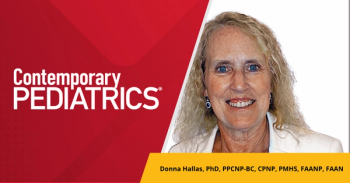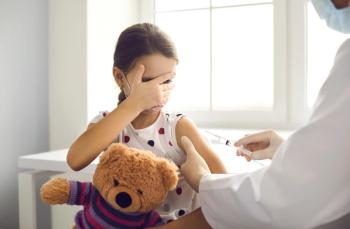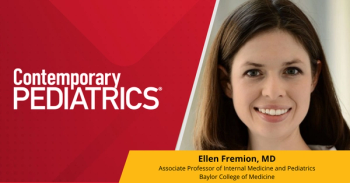
- January/February 2023
- Volume 40
- Issue 01
Beating burnout
Defining burnout and why it has increased among health care providers
The American Academy of Pediatrics (AAP) recently provided updated guidance on physician wellness, in which they discussed burnout among pediatricians.1 Pediatricians are not immune to burnout, according to the AAP. The COVID-19 pandemic has only added stressors, which make burnout more likely. To combat these stressors, the AAP outlined efforts in an updated report titled “Physician Health and Wellness.”
The report stated that all pediatric disciplines saw an increase in rates of burnout from 2011 to 2014, as burnout rates increased from 35.3% to 46.3%. There is no consensus on the definition of burnout, with 142 different definitions among 182 studies.2 However, physicians with burnout are described as “angry, irritable, impatient, [and they have] increased absenteeism, decreased productivity, and decreased quality of care.”
Burnout is notably different from stress and depression. Although depression is a general disease, burnout is a syndrome that is often job related and specific to 1 situation. Stress is also often challenging for physicians but presents with different symptoms from burnout.
“Burnout feels like stress, as we have to push ourselves to function, but [it] has an added element of demoralization, frustration, and a lack of motivation,” said Michael Jellinek, MD, professor of psychiatry and of pediatrics at Harvard Medical School in Boston, Massachusetts. “There is a lack of energy and interest, [and] sometimes this translates into not feeling well or fatigue that becomes a sick day.”
Approximately half of physicians in practice experience burnout, which can lead to medical errors, higher cost, lower quality of care, and worse patient outcomes overall.2 Suicidal thoughts were also frequent, reported by 14% of physicians. Only one-third of these physicians sought treatment.
Burnout was found to be most common in physicians aged 45 to 54 years. Factors that increased the risk of burnout included longer work hours, dissatisfying balance between work and home lives, increased reliance on technology while working, dissatisfying compensation, and lack of respect from colleagues.
“The weight of caring for children who are chronically ill, disabled, maltreated, neglected, or otherwise medically vulnerable can take a toll over time,” said Hilary H. McClafferty, MD, FAAP, lead author of the AAP report.1 “This can lead to overlapping symptoms of compassion fatigue, secondary traumatic stress, vicarious traumatization, moral distress, countertransference, and ultimately burnout.”
McClafferty also noted that most pediatricians are women, and that female physicians have been reported to experience burnout more often than male physicians. Research on the impact of race, gender, ethnicity, and other factors on burnout is still ongoing. Gaps in the response from health care systems have been noted following the COVID-19 pandemic.
Shifts in technology are also a notable factor in increasing physician burnout.2 Many physicians struggle to understand electronic medical records because of confusing user interfaces. “The health care system has moved to higher workloads, less autonomy, and more standardization as groups and delivery systems get larger and more automated,” Jellinek said. “Efficiency and productivity standards, electronic record keeping, [and] intensive measurement may have all added some benefits but have come with almost constant, increased work pressure.”
Jellinek also stated that with influenza, COVID-19, and respiratory syncytial virus circulating, contact with colleagues has become less face-to-face and more virtual. This has increased feelings of isolation in many physicians.
Physician burnout is also tied to symptoms of posttraumatic stress disorder (PTSD), according to a recent study.3 Investigators conducted a multicenter survey among health care professionals from January 2022 to March 2022 and found an association between burnout and PTSD symptoms.
A recent meta-analysis found that burnout in physicians more than doubled the risk of an adverse event related to patient safety, along with leading to worse care and decreased patient satisfaction.2 When experiencing burnout, physicians are more likely to work fewer hours and to leave clinical medicine.
“A physician suffering burnout will dread working, and a physician’s work is important, detailed, and demanding,” Jellinek said. “Quality can suffer, possibly by overlooking lab results or follow-ups.”
Physician health may also be at risk, as an imbalance between work and reward has been associated with negative health outcomes.2
For instance, 1 study found that the COVID-19 pandemic exasperated the frequency of burnout in physicians.4 Investigators conducted a cross-sectional study of health care workers (HCWs) registered with the Ministry of Health from January 2022 to June 2022. The study evaluated how the condition, defined as burnout syndrome (BOS), presented in HCWs during the COVID-19 pandemic, which brought about a wave of illness tackled by HCWs worldwide. HCWs were included in the study if they were on duty and consented.
Electronic surveys were sent to HCWs, with questions on sociodemographic- and profession-related data, work environment–related variables, COVID-19–related variables, consequences of BOS, and Maslach Burnout Inventory, which is used to diagnose burnout. Physicians responded using a scale from 0 to 6, with a higher scale indicating a higher level of burnout.
There were 284 completed surveys from HCWs, nearly two-thirds of which were men and approximately 68% had over 10 years of experience. Participants were more often aged under 40 years and married.
Burnout was reported in approximately 48% of HCWs. Roughly 71% of HCWs were on the frontline of combating COVID-19, with almost half having comorbid diseases. Approximately 83% of HCWs reported increased work hours following the start of the pandemic, and approximately three-fourths reported conflicts with patients or family.
Sleep deprivation was seen in approximately 76% of HCWs, dissatisfaction with resources in approximately 20%, an inability to choose days off in approximately 88%, and feeling unappreciated in approximately 71%. Approximately 64% of HCWs were infected with COVID-19, approximately 92% had a colleague or family member get infected, and approximately 22% lost a colleague or family member to COVID-19.
There were 3 domains of burnout: emotional exhaustion (EE), depersonalization (DP), and loss of professional accomplishment (PA). High rates of EE were seen in approximately 53% of participants, high DP rates were seen in approximately 43%, and highly reduced PA was seen in approximately 31% of participants. Over one-third of the study population presented with severe burnout predictors.
These results showed an overall negative impact on the health care system from the COVID-19 pandemic, which has caused high rates of severe burnout. To reduce the frequency of burnout, investigators believe it is necessary to focus on physician wellness.2
Emily Aron, MD, a child, adolescent, and adult psychiatrist, discussed some signs of burnout in physicians. These included not showing up to work, frequently talking about feeling tired, not feeling connected, and negative behavior. Aron also noted how unhealthy behaviors could be linked to burnout, such as substance use and suicidal behavior.
In combating burnout, the AAP recommended social support, creating individual awareness and resilience measures, and treating mental and physical conditions that may be unaddressed.1 Structured debriefing between the medical team following challenging experiences was stressed in the report. The AAP also suggested creating a more healthy lifestyle, using vacation time, developing a hobby, practicing gratitude, finding a supportive social network, creating a personal mission statement, and exploring mind-body practices.
“There is often a stigma with seeking help, even among those we typically consider as the helpers,” McClafferty said. “We must work together to make sure physicians are given the respect, privacy, and opportunity to be heard without stigma or professional penalty and continue to advocate for the well-being of physicians at every stage of training and practice.”
Investigators from Pennsylvania State University recommended following a hierarchy of needs, starting with prioritizing the basic physical and mental health needs of physicians.2 Higher-order needs include connection, respect, appreciation, and changes in interactions with electronic systems. Others have recommended system changes to improve burnout. “Burnout is a real problem with real consequences, and every level of the system needs to support practice,” Jellinek said.
On a management level, Jellinek suggested seeking input, sharing decision-making, recognizing good work, supporting workers’ autonomy, providing good communication, giving reasonable responses to physicians’ requests, providing attention to physicians’ workload, and creating a culture of values that can prevent burnout. On a clinical level, Jellinek suggested the same attitudes as on a management level, along with supporting a collegial environment, welcoming input at every level, and supporting autonomy and career growth. On an individual level, Jellinek urged physicians to make time for self-care, create reasonable expectations for work-life balance, take general time off and time for vacations, create opportunities for peer support, and self-monitor their emotional state. This can all lead to early recognition and prevention of burnout.
“We do have an ethical imperative to address burnout in physicians, because [patients’] lives are on the line,” Aron said. She also recommended that systems take the time to understand the needs of medical employees, as not every individual will have the same needs and each will need to be separately addressed.
References
- American Academy of Pediatrics releases updated guidance on physician wellness. American Academy of Pediatrics. October 24, 2022. Accessed October 24, 2022.
https://www.aap.org/en/news-room/news-releases/aap/2022/american-academy-of-pediatrics-releases-updated-guidance-on-physician-wellness/ - Yates SW. Physician stress and burnout. Am J Med. 2020;133(2):160-164. doi:10.1016/j.amjmed.2019.08.034
- Liu Y, Zou L, Yan S, et al. Burnout and post-traumatic stress disorder symptoms among medical staff two years after the COVID-19 pandemic in Wuhan, China: social support and resilience as mediators. J Affect Disord. 2023;321:126-133. doi:10.1016/j.jad.2022.10.027
- Al-Otaibi T, Abbas A, Ashry Gheith O, et al. Determinants, predictors and negative impacts of burnout among health care workers during COVID-19 pandemic. J King Saud Univ Sci.2023;35(1):102441. doi:10.1016/j.jksus.2022.102441
Articles in this issue
over 2 years ago
The latest FDA approvals for children’s medicationsover 2 years ago
Help parents navigate food trends and labelsover 2 years ago
The rise of the variantsover 2 years ago
Scalp thickening and folding in a pubertal boyNewsletter
Access practical, evidence-based guidance to support better care for our youngest patients. Join our email list for the latest clinical updates.














